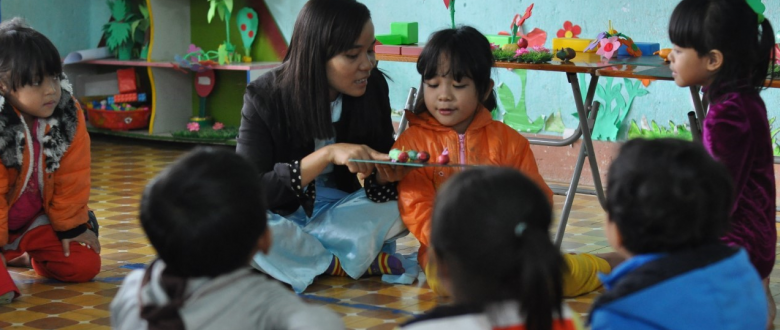
Do you remember when you left kindergarten to go to primary school? Do you remember your first day? Such a period is key in children’s life. From 2014 to 2016, VVOB supported Vietnamese educational stakeholders in helping children of disadvantaged districts of Vietnam to make that transition. Based on the success of the approach, the Ministry of Education and Training has nationally scaled up the transition approach across Vietnam in 2016 and 2017.
Transition in the context of Vietnam
In Vietnam, primary schooling is often considered the starting point of more formal education, with high expectations from teachers and parents. Moving to a completely new school environment with a different pedagogical approach is a sensitive moment for the child, which can impact his/her further development and learning. School leaders, teachers and parents play a crucial role in supporting him/her to overcome those new challenges.
Developing capacity of teachers and school leaders
Between May 2014 and December 2016, VVOB worked with the provincial departments and district bureaus of education and training in disadvantaged districts of four provinces of Vietnam (Nghe An, Quang Nam, Quang Ngai and Thai Nguyen) by developing their capacities to support teachers and school leaders involved in children’s transition. Throughout two years of trainings, workshops, coaching, peer learning, harvesting and sharing experiences, practices have changed in many schools of the participating districts.
Valuing diversity in Tan Ky and Tra Bong
Noticeably, in Tan Ky (Nge An province) and Tra Bong (Quang Ngai province), two of the most disadvantaged areas in Vietnam, teachers and school leaders of preschools and primary schools gradually increased their collaboration and connected with parents.
In Tan Ky, where about 80% of the population belongs to ethnic minorities, the education officers replicated the training Change management to support transition to all preschools and primary schools leaders of the district. Eventually, school leaders shared their knowledge with their staff and the Bureaus of Education and Training issued official guidelines for schools to take the next steps. In 2015 and 2016, schools exchanged good practices and jointly organized activities. For example, highlighting the ritual of transition, they improved their existing formal hand-over of children from preschool to primary school and organized visits to primary grade one class during children’s final month at preschool.
In addition to organizing similar activities, Tra Bong district – where ethnic minorities represent 80% of the population – developed interesting transition practices to strengthen the connection between schools and parents or caregivers. Together with volunteers of Women’s Union, they organized sessions on parental involvement during the transition period.
A smooth transition for children all around Vietnam
Over the last three years, cooperation between schools from the two education levels has fostered mutual respect and understanding. Participating schools gradually extended their collaboration and started bridging their classroom practices. With their school learning from each other and connecting with their parents, children’s experience of transition goes from stressed and anxious to safe, nurtured and supported. They appear more confident and independent as they start their primary school life. Based on the successful approach in VVOB programme’s provinces, the Ministry of Education and Training has nationally scaled up the transition approach across Vietnam in 2016 and 2017.
_____
A 3 pages article was published in ARNEC Connections – Working Together for Early Childhood – no. 11 (2016) (in English)




